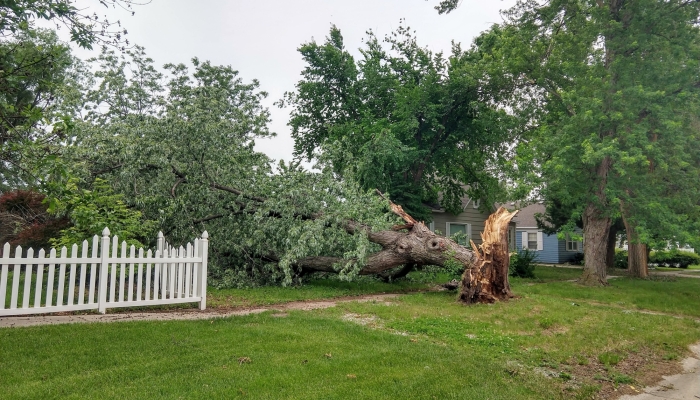Tree programs and resources
Spring is soon approaching, and with it an increased risk for severe weather. The NRD wants to remind homeowners and communities about the Storm Damaged Tree Program. This program is designed to encourage replacement planting of trees and shrubs damaged or destroyed due to tornadoes, strong winds, hail, or ice storms. Cost-share funding is available for 4’-8’ nursery stock replacement trees.
This program is not meant to replace trees that have been damaged or have died due to winter kill, disease, or insects. Cost-share through this program is not available for the removal of damaged or dead trees or stumps.
This program offers 50 percent cost-share to replace trees (up to $300 for an individual and up to $10,000 for a community). Funding will be considered for planting on public lands, and rural or urban private property. The person or community applying for the program must agree to maintain the plantings for a minimum of five years as well as be responsible for planting and materials.
If you have trees that are damaged by a storm and you would like them to be replaced using the NRD program, you will need to have a brief site visit from the NRD forester before you remove what remains of the tree(s). The forester will offer recommendations for a work plan for replacement plantings to the applicants. Only those trees that have suffered at least 30 percent damage, as determined by the NRD forester, will be considered for replacement funding.
The community or individual is eligible for funding for one application per storm event, but that application may involve replacing multiple trees. The application for cost-share for this program must be made within one year after the storm occurs and planting must be completed within one year of the date of approval of the application. For full details, visit upperbigblue.org/stormdamagedtrees.
Looking to improve your community canopy? The NRD Community Tree Program provides financial assistance to communities for the development or improvement of city or village tree resources. Two levels of participation are offered. The first level encourages cities and villages to develop a new tree improvement program, which qualifies them for the Tree City USA designation. A higher level of district assistance is available to communities that make such a commitment. The second level of assistance is available to cities, villages and other public entities that have developed a specific plan for tree replacement or new plantings.
Related to the Community Tree Resources Program but with a slightly different emphasis, the NRD also has a Community Native Grass Resource Program. This program offers financial assistance to communities to develop or improve city or village properties where the establishment of native grass would be beneficial. Such areas may include, but are not limited to, lands surrounding wastewater treatment lagoons, lands within a Wellhead Protection Area (see page 2), and areas suitable for wildlife habitat improvement.
The NRD’s Parks Program offers financial assistance to communities for the development or improvement of natural resources in nature areas, campgrounds, and park facilities. This program is available for any city, town, county or school located in the district. The district is not considered the lead agency in park development, but will assist in the funding.
The district will consider—on a case-by-case basis—providing cities and villages with planning and financial assistance for multi-use parks and recreation improvement/development that encourages tree planting, creation of wildlife habitat, open spaces, and other enhancements of natural resources.
Public use areas that conserve soil and water are to have priority. To help reduce damages from flooding, the district promotes publicly-owned linear parks, greenbelts, and other open spaces by offering planning and financial assistance to counties, cities and villages.

